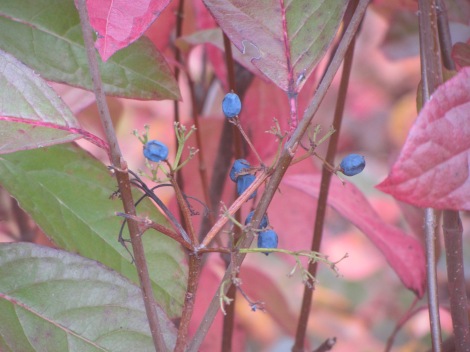
Arrowwood (Viburnum dentatum): This bush grows to about 12 feet and has pretty fall color with blue bird-friendly berries. Zone 2-8
As nurseries and landscapers begin to notice that we bird lovers spend many, many millions of dollars (billions?) on birding each year, some have begun to carry native, bird-friendly plants. We have gradually been replacing the non-native deer fodder in our yard (e.g., Rhododendron, Hosta and evergreen Azaleas native to Asia) with attractive, low maintenance native plants that bear fruit to attract birds and butterflies. Our local birds and butterflies evolved with these plants and they thrive when they feed on the food sources they evolved with. There are many great sources of information and plant suggestions. My “Bible” has been C. Colston Burrell’s Native Alternatives to Invasive Plants” . Another good, more comprehensive one is Steve Kress’ Audubon Society Guide to Attracting Birds, but more and more books are available on the subject. I looked around the yard with my camera and here are just a few good candidates:
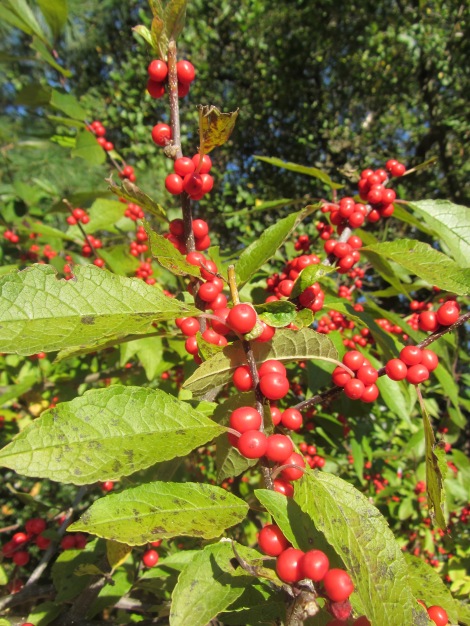
Winterberry (Ilex verticulata): In the winter, the red berries brighten the landscape until the birds eat them all. This bush grows to about 12 feet and is hardy from Maine to Florida. Be sure to get one male plant to go with the females.
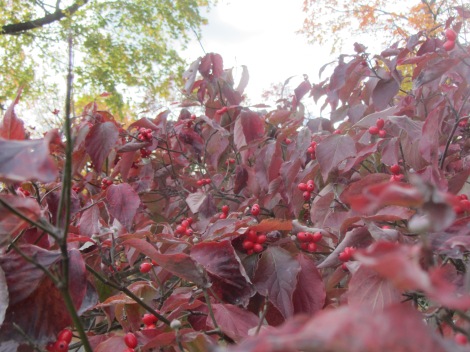
Flowering Dogwood (Cornus florida): Many birds enjoy the fruit of this lovely small tree. It is hardy as far north as Zone 5, has pretty fall color and very showy flowers in the spring.
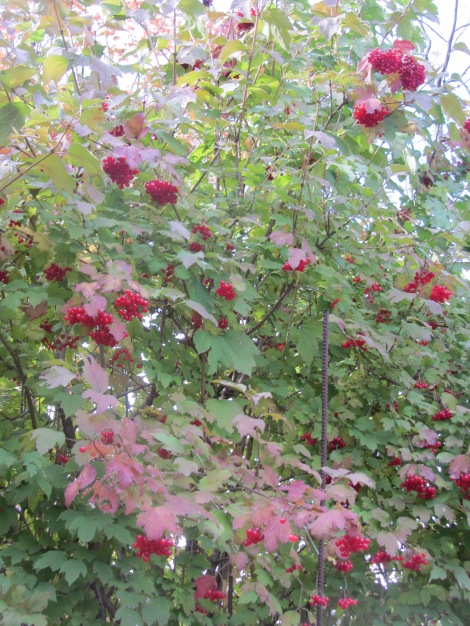
American Highbush Cranberry (Viburnum trilobum): This large handsome shrub makes a great summer screen for the patio. The flowers resemble the non-native lace cap Hydrangeas and have bright red berries in the fall. I have seen only Cedar Waxwings on mine but according to Steve Kress’ Audubon Society Guide to Attracting Birds, Brown Thrashers and Ruffed Grouse also favor them and 29 other bird species will eat them. Hardy in Zones 2 to 7.
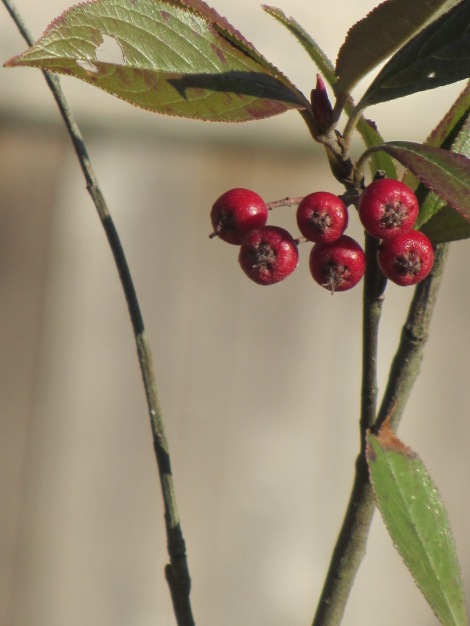
Red Chokeberry (Aronia arbutifolia): This shrub grows to about 8 feet and has red berries beloved by birds. We have to move these because it doesn’t like to be near our Black Walnut trees but it will be a great one after we do that. Zones 5 to 9.
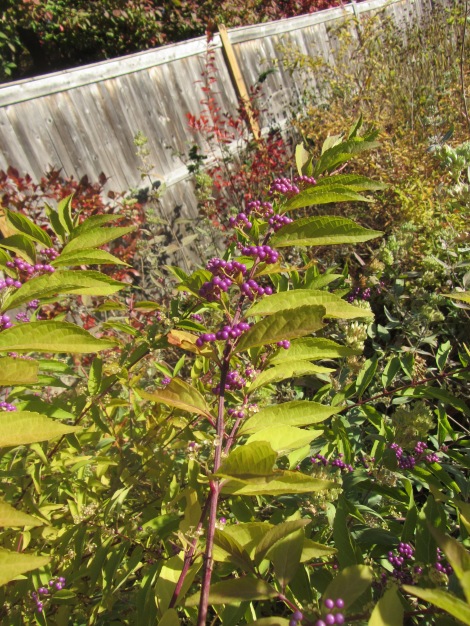
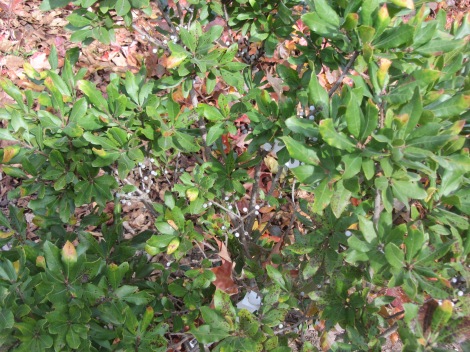
Peg said,
October 30, 2013 @ 4:26 pm
Thank you! Great information.
LikeLike
Carla said,
November 5, 2013 @ 12:41 pm
Your pictures makes me wish I had more room in my yard. But I do have space for several Yaupon and Possum Haw Hollies, for which the birds and I are grateful. I have a Blackhaw Viburnum, too, and need to find space to plant a pollinator for it.
LikeLike
naturaliststable said,
November 9, 2013 @ 8:43 am
You have great native Texas plants, Carla, and your birds love you!
LikeLike
Jacque Masumian said,
November 5, 2013 @ 1:44 pm
Nice post. My winterberries are really loaded this year!
LikeLike
naturaliststable said,
November 9, 2013 @ 8:42 am
The Robins have discovered mine now. I hope they leave some for winter color, but if not, I planted them for the birds….
LikeLike
Pete’s Tree: Native Plant Success | A Naturalist's Table said,
July 20, 2017 @ 8:42 am
[…] have championed native plants here previously, especially deer resistant bird friendly ones and I now have another success. My sister-in-law […]
LikeLike